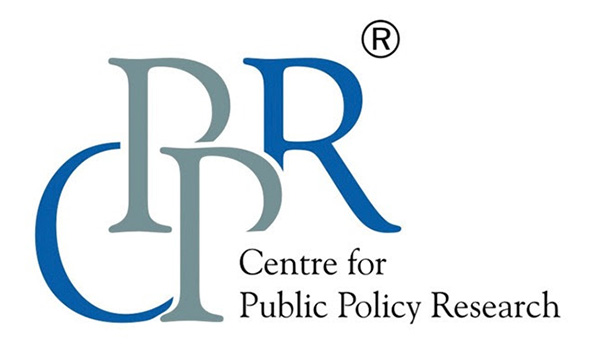Articles
Degrees That Don’t Pay: Is Theory Without Skills Failing Our Youth?

India has the largest youth population in the world, with approximately 65% of the population under the age of 35. This seems like a demographic dividend for our nation, but is actually scarred by the lack of connection between earning a degree and earning a living. The India Skills Report 2024 conducted interviews with postgraduates and final year students to judge their skills through a curated employability test, and the results showed that only 51.25% of the graduates tested were skilled enough to be hired.
Even after the boost in the number of degree holders, every one in two Indian graduates is considered unemployable right after college. According to the Periodic Labour Force Survey 2023, the rate of unemployment among youth in urban areas aged between 15-29 years old was 17.5% with the highest number in the unemployment group being graduates. This is a sign of contradiction as the rate at which degree holders have increased in India does not match the percentage of the employable Indian graduates i.e. 42.6% (PLFS 2023).
The World Bank and Centre for Monitoring Indian Economy (CMIE) forecasts suggest that India is in a long-term crisis of underutilized educated young people and increasing unemployment unless skill development is acknowledged.
Degrees and Employability
There is a gap between higher education and employability in India, which highlights deeper structural issues in our education system. These are because of the following:
- outdated curricula
- poor alignment with the demands of the job market
- lack of industry-relevant training
But why does this gap exist in India?
Before introducing the New Education Policy 2020, the Indian education system heavily prioritised theoretical knowledge over practical and industry-relevant skills, which is directly related to the root of our problem.
“According to the Ministry of Skill Development and Entrepreneurship, only 4.7% of India’s workforce has formal vocational training, compared to 52% in the United States and 75% in Germany (cited in Outlook Business 2023).”
The Conflict: Whom Are We Failing?
The question that comes to the mind is – whom are we failing? The young adults? Or the employers? Or our country’s economy? The answer is – all of them.
“The Educated Unemployed” – The mismatch between expectations and delivery in the workplace often pushes employees towards mental stress, forcing them to quit their jobs and become a part of the population called “educated unemployed”. This part of the population especially includes ‘the highly educated’ because those who pursue higher studies to get postgraduate degrees ultimately desire a job with a higher status, causing delayed entry into the job market.
“Economic Impact” – India is one of the fastest-growing economies in the world, but it is failing to build a skilled workforce. An efficient labor supply is essential to continue this spectacular economic expansion in India; otherwise, it may get stuck on the way to prosperity regardless of its demographic and developmental potential. The focus should be shifted towards the lack of streamlined infrastructures for vocational and skill-based education. The government of India has introduced various programs under the Skill India initiative to reduce this gap, but the pace is slow and does not match the speed at which we are producing graduates with degrees.
The Crisis Through Three Lenses
The effect of the problem should be examined in three lenses – the level of skills, social impact, and economic cost.
1. Disconnect between Skills and Curriculum
In colleges, professors focus on teacher-centric theoretical knowledge rather than exposure to modern tools, collaborations with industries etc. Only 20% engineering graduates with degrees are considered employable by the IT sector or manufacturing industries. Law students, similarly, graduate without any exposure to real-world drafting, litigation, or even legal research. Other humanities subjects prioritize theoretical knowledge but not technical aspects of working in the actual jobs.
2. Social Impact and Regional Disparities
Youth migration to cities in search of work, financial dependence, and reduced self-esteem in graduates are increasing causes of mental health issues and social disillusionment. States with high literacy and education rates such as Kerala, face the pitfalls of graduate unemployment because of lesser knowledge-sector jobs. Whereas, states such as Gujarat and Tamil Nadu possess a better linkage between vocational institutes and the local industry, providing their students with greater levels of employment opportunities.
3. Economic Mismatch and Opportunity Loss
The current skill gap is projected to cost India as much as a half of a trillion dollars by the year 2030. Furthermore, Tier 2 and Tier 3 city degree-holders usually take jobs that are below their capability or do not find any job at all.
Policy Measures and Why are They Not Enough
Skill India Mission (launched in 2015) and its flagship scheme, the Pradhan Mantri Kaushal Vikas Yojana (PMKVY, launched in 2015), have tried to scale up vocational training in the country. The University Grants Commission has also promoted employment-oriented courses in universities since 2013, through initiatives like the Bachelor of Vocation (B.Voc.) programme under the National Skill Qualification Framework.
More recently, the National Education Policy (NEP) 2020 has suggested a ‘credit framework’ where students would accumulate skills through multiple pathways, including professional-skill based training. However, a major challenge is that most colleges and universities lack the academic autonomy to design and curate industry-relevant curricula, which limits the effectiveness of such reforms.
Colleges still see vocational subjects as optional add-ons. Instructors are undertrained, funding is sparse, and a centralised national skill database to monitor progress post-training is non-existent, making the system fragmented.
What Can Be Done?
Embedding the following through effective policy changes might make the system more efficient:
- Curriculum Reform & Industry Collaboration: The curriculum should be regularly updated according to the courses based on industry trends along with mandatory internships.
- Skill-Based Credit System: Give students an opportunity to take certified vocational modules within or across disciplines.
- Stream-Specific Vocational Training: Students should be taught field specific skills such as legal drafting for law students, policy fieldwork for humanities students or sales analytics for commerce students.
- State-Led Models: The state must assume an enabling role, via policy changes, which allows educational institutions the flexibility to develop programs in response to the demand of labor and industry. This may involve practices like enabling credit mobility where students can start learning in various programs or institutions that creates both flexibility, mobility and lifelong knowledge.
Conclusion
In the current scenario, simply possessing a degree in India is not sufficient. It is necessary to equip graduates or degree-holders with the needed skills and adaptability that will enable them to make a potent contribution to the growth of the economy. Education should be a bridge to employment, productivity, and dignity instead of a burden of unfulfilled hopes.
To do so, India requires broad policy frameworks to match the education system to the labour market. It also should ensure that vocational training and higher education pathways are closely linked to what the industries really need. This is a requirement not just of employability but also of continuing economic momentum in India. While this task is pressing and carries considerable weight, it also offers an important opportunity for progress. If acted on quickly and with a forward-looking approach, India can transform its demographic dividend into a true economic benefit.
Let the degree pay; not just on paper, but in prosperity as well.
Sejal Goel is an alumna of CPPR Academy’s Public Policy Summer Bootcamp 2025 batch. She was mentored by Ms Meenuka Mathew, Fellow (Programme Design & Evaluation) at CPPR.
Views expressed by the authors are personal and need not reflect or represent the views of the Centre for Public Policy Research (CPPR).

Sejal Goel
Sejal Goel is an advocate, researcher, and educator who explores how law and policy can address the root of social and governance challenges. Her work includes writing and research through initiatives like Project Woh Wale Din to create awareness about menstrual hygiene in underprivileged communities and collaborations with Delhi Government schools, such as Sarvodaya Bal Vidyalaya, to strengthen public education.
She has also worked with the research team of the Delhi Commission for Protection of Child Rights (DCPCR). Through her legal and research work, Sejal aims to contribute to policies that foster inclusion, equity, and systemic reform.


